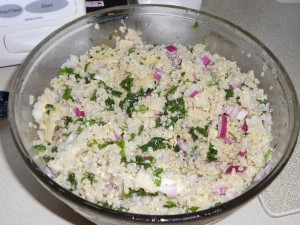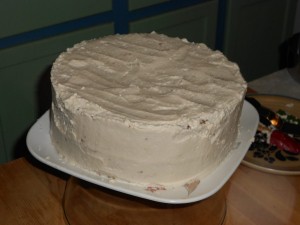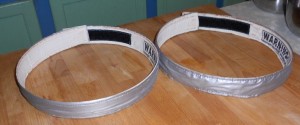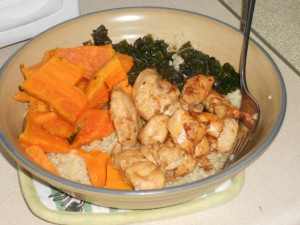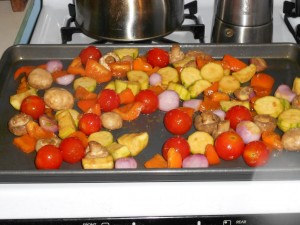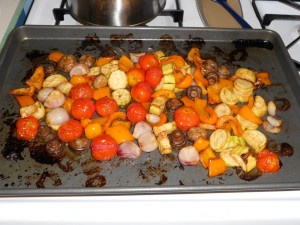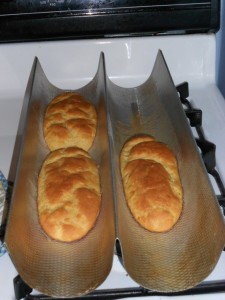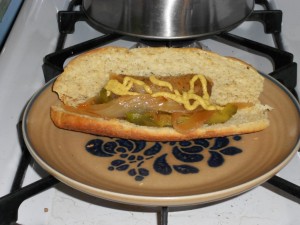For years my go-to summer salad was my take on “Marinated Pasta Salad” from Mollie Katzen’s The Enchanted Broccoli Forest cookbook. Of course, one could modify that recipe to use rice pasta (gluten free) and leave out the mozzarella cheese (dairy free), but for July 4th this year I made a few additional tweaks and came up with Marinated Quinoa Salad. Many of the same flavors and refreshing taste, but without the food allergies!
Marinated Quinoa Salad
45 minutes to prepare, plus time to chill
Makes 4-6 servings
Ingredients
- 1 cup dry quinoa, rinsed
- 2 cups water
- 1/2 bunch kale
- 1/2 medium red onion, finely diced
- 1 jar or can artichoke hearts (8-15 oz., see note below), coarsely chopped
- 1/2 cup (packed) finely minced parsley
- 3 Tablespoons olive oil
- 3 Tablespoons red wine vinegar
- salt and pepper to taste
- basil (1 Tablespoon fresh or 1 teaspoon dry) or other herb blend (I used Pasta Sprinkle from penzeys.com)
Directions
- In a 1 quart saucepan with a lid, boil the water. Add the rinsed quinoa, stir, lower the heat, and simmer for 15 minutes or until tender. Allow the quinoa to cool.
- Clean the kale by removing the leaves from the stems. Rinse the leaves in a bowl of water and tear them into large, bite-size pieces. In a large pot with a lid, heat about one inch of water to boiling. Add kale and steam/blanch for 2-3 minutes until tender. Toss with tongs a couple of times during the cooking. Remove to a bowl of cold water to stop the cooking process. Drain thoroughly and chop into smaller bite-size pieces.
- Add kale, red onion, artichoke hearts, and parsley to quinoa. Toss.
- Add oil, vinegar, salt & pepper, and basil or herbs. Toss
- Chill for at least 30 minutes.
Notes
- Quinoa is a high-protein, gluten-free grain-like seed gaining in popularity in the US, but ancient in origin. Several varieties are available. I buy the dark-beige variety in bulk at the Seward Co-op. It requires only a quick rinse in a sieve before cooking. Other varieties may require longer rinsing, soaking, and/or cooking times. Follow the directions for your quinoa. You should end up with approximately 2 cups cooked quinoa.
- Most artichoke hearts seem to be processed with ingredients that are likely to be corn-based (e.g., citric acid, “spices”). If you are sensitive to corn, use your judgment. I find that if I drain the marinated artichoke hearts, I don’t have much, if any, reaction. I haven’t tried the canned variety (with the citric acid), but would drain and rinse those before using. Feel free to substitute some other vegetable (green peppers, broccoli, carrots).
- You could use the kale raw and be just fine. I find a few minutes of blanching heightens the color and makes it easier to digest.

